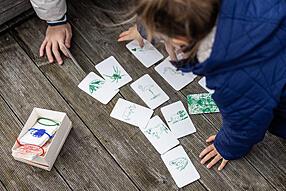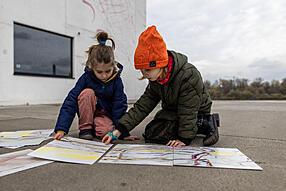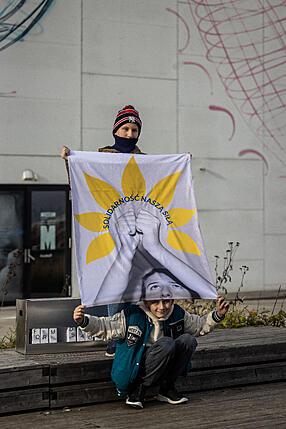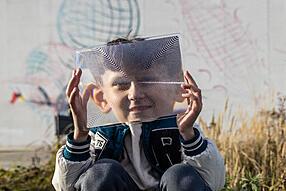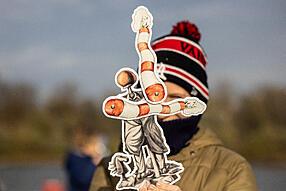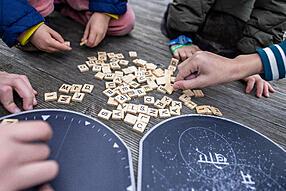Primary Forms
II edition
Primary Forms is a periodic programme designed for pupils from the fourth through the eighth grade of primary school, carried out by the Museum of Modern Art in Warsaw and the Roman Czernecki Educational Foundation. This year sees its second edition. This time, the programme once again features a box that contains a “dormant” exhibition, which can materialise at any moment in a form chosen by pupils with the support of their teachers and the Museum’s education team.
The boxes are sent out to selected schools in different parts of Poland. During the first edition in the school year 2021/2022, they travelled to Szczekociny, Pogorzałki and Rozdrażewo, among other towns. The artworks created in the local primary schools served as teaching props (Goshka Macuga’s piece), transformed the interior decoration of classrooms (Kasper Bosmans), helped organise reading clubs (Slavs and Tatars), initiated happenings (Sharon Lockhart), and changed the school regulations (Mikołaj Moskal).
The box from the first edition of Primary Forms contained exercises, tools and instructions created by the above mentioned artists as well as Paweł Althamer, Gabo Camnitzer, Ramona Nagabczyńska, Agnieszka Polska, Katarzyna Przezwańska, and Olga Micińska.
The second edition box, prepared for the school year 2022/2023, will once again be sent to ten schools across the country, and – as part of broadening inter-institutional collaborations – to five cultural institutions, which will work on site with teachers and pupils. Joining the project are: Municipal Art Centre in Gorzów Wielkopolski, BWA Ostrowiec, Goyki 3 Art Inkubator in Sopot, Kronika Centre for Contemporary Art in Bytom, BWA Tarnów.
This year’s edition comprises works by Tarek Atoui, Maximiliane Baumgartner, Alicja Bielawska, Katya Buchatska, Dora Garcia, Prabhakar Pachpute, Joanna Piotrowska & Bożena Rydlewska, Raqs Media Collective, Jaśmina Wójcik, and the Zakole collective.
Designed in the form of artistic exercises and objects placed in the box, the exhibition refers to the tradition of art history: to Marcel Duchamp and his travelling exhibition-in-a-suitcase, as well as to “Fluxkits” – boxes prepared by artists affiliated with the Fluxus movement, containing scores, models, audio recordings, games, puzzles, and stencils, among other items. Primary Forms also alludes to other experiments in the fields of art and education undertaken in the 20th and 21st centuries, such as Pure Consciousness – the series of On Kawara’s exhibition in kindergartens, initiated in 1998. Paintings by this Japanese conceptual artist could be used as teaching props helping to learn the days of the week and numbers.
The programme is carried out in classrooms and corridors, gym halls and schoolyards. The exhibition in a box can be executed numerous times and interpreted in various ways (through the selection of different fragments, scale, colours, etc.). We use it to ask the following questions: what can we do with art? What can an exhibition be? What can we learn from artists? Is knowledge created through contact with art? And finally, how to understand art or enjoy not understanding it?
Primary Forms was inspired by the School Prints initiative, carried out for a brief period in the UK right after World War II. On that occasion, a set of lithographs created by a group of esteemed artists was sent to primary schools. Those artists included Barbara Jones, Henri Matisse, Henry Moore, John Nash, and Pablo Picasso, among other figures.
The Primary Forms programme is developed under the curatorial supervision of Sebastian Cichocki and Helena Czernecka.


